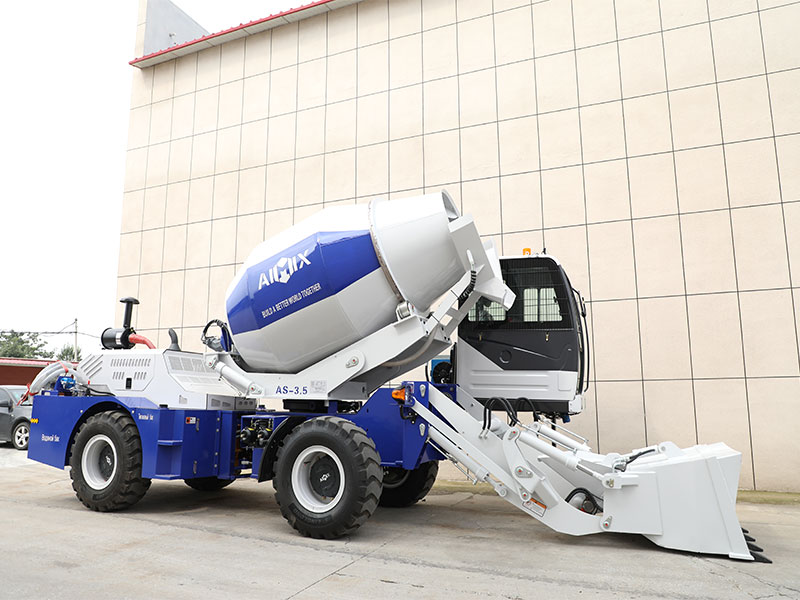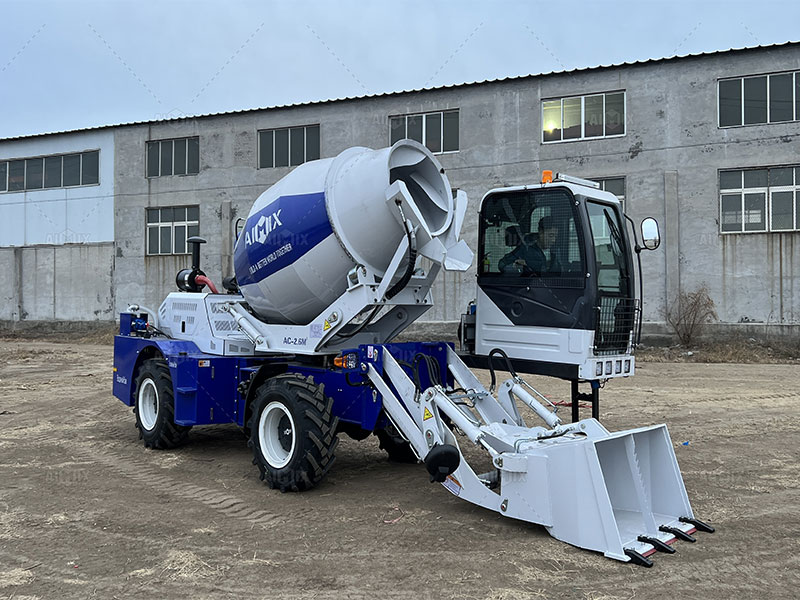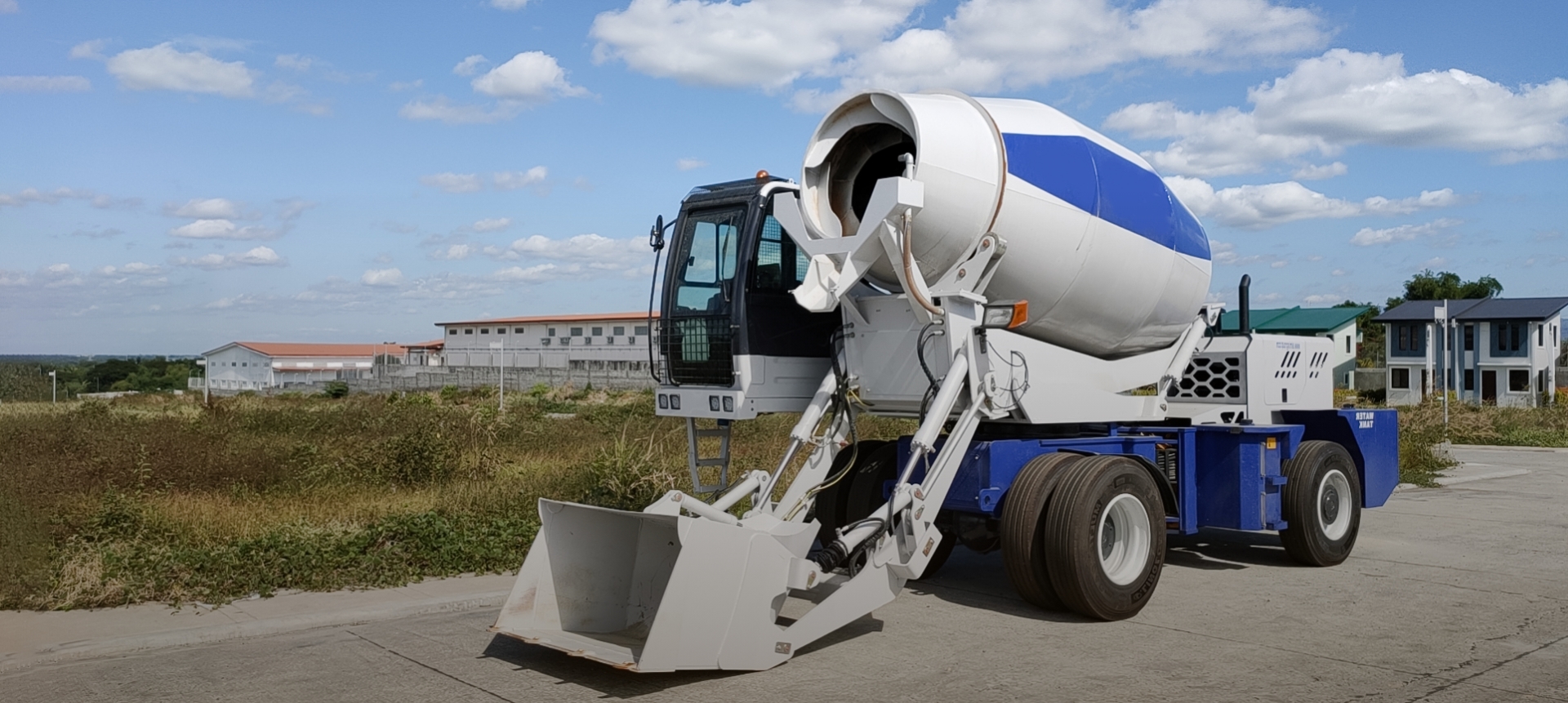In the realm of construction machinery, the quest for efficiency and productivity has led to the rise of self-loading concrete mixers. These innovative machines promise to revolutionize on-site concrete production, but the decision to invest in them requires a comprehensive assessment of their cost efficiency.
Initial Investment vs. Long-Term Gains:
The journey into assessing the cost efficiency of self-loading concrete mixers begins with the consideration of the initial investment. While these machines may come with a higher upfront price compared to traditional mixers, it’s crucial to look beyond the immediate self loading concrete mixer prices. Self-loading mixers are designed to streamline the concrete production process, offering automation and versatility that can result in significant long-term gains in productivity. Understanding the relationship between the initial investment and the potential for enhanced productivity is key to assessing cost efficiency.

Operational Speed and Time Savings:
One of the primary contributors to the cost efficiency of self-loading concrete mixers is their operational speed and the time savings they offer. These machines are capable of mixing concrete on-site and transporting it directly to the point of placement, reducing the need for additional equipment and manual labor. The efficiency gains result in quicker project completion, leading to cost savings in terms of labor, project management, and overall project duration. The price of productivity is closely tied to the ability of self-loading mixers to accelerate construction timelines.
Labor Optimization:
The integration of automation in self-loading concrete mixers translates into labor optimization. These self loading mobile concrete mixers are equipped with features that automate the mixing, loading, and transportation processes, reducing the dependency on manual labor. Cost efficiency arises from the ability to achieve similar or higher levels of productivity with a smaller labor force. The reduced labor requirements contribute not only to cost savings but also to improved safety and a more streamlined construction site.

Reduced Material Wastage:
A notable aspect of the cost efficiency of self-loading concrete mixers is the reduction in material wastage. Traditional concrete mixing methods may lead to overordering or inaccurate measurements, resulting in excess concrete that goes unused. Self-loading mixers, with their precise measurement systems, ensure that only the necessary amount of concrete is produced, minimizing material wastage. This efficiency not only contributes to cost savings on raw materials but also aligns with sustainable construction practices.
Fuel Efficiency and Operating Costs:
Fuel efficiency is a crucial factor in the cost efficiency equation. Self-loading concrete mixers for sale are designed to operate on a more fuel-efficient basis, optimizing power consumption during mixing and transportation. This not only results in cost savings but also reduces the environmental impact. The assessment of cost efficiency must consider the long-term operating costs, including fuel consumption, and weigh them against the productivity gains and time savings achieved by these machines.
Adaptability and Versatility:
The cost efficiency of self-loading concrete mixers is further enhanced by their adaptability and versatility. These machines can navigate various construction scenarios, including remote locations and challenging terrains. The ability to work in diverse environments reduces the need for additional equipment and resources, contributing to overall cost savings. The versatility of self-loading mixers makes them suitable for a range of projects, enhancing their long-term financial viability.
Maintenance and Downtime:
The cost-efficiency analysis extends to the maintenance requirements and downtime associated with self-loading concrete mixers. While the initial investment may be higher, these machines are known for their durability and robust construction. Reduced maintenance needs contribute to lower ongoing expenses, minimizing downtime, and ensuring that the equipment remains operational. The assessment of cost efficiency involves weighing the initial investment against the long-term maintenance benefits and the resulting impact on overall productivity.
Conclusion:
The cost efficiency of self-loading concrete mixers is a multifaceted analysis that goes beyond the initial price tag. Assessing their productivity involves considering factors such as operational speed, labor optimization, material wastage, fuel efficiency, adaptability, and maintenance. By understanding the relationship between these elements, construction professionals can make informed decisions about the cost efficiency and long-term financial viability of integrating self-loading concrete mixers into their operations. Ultimately, the price of productivity is not just about the upfront costs but the sustainable gains in efficiency and savings over the lifecycle of these innovative self loading mixer trucks.
